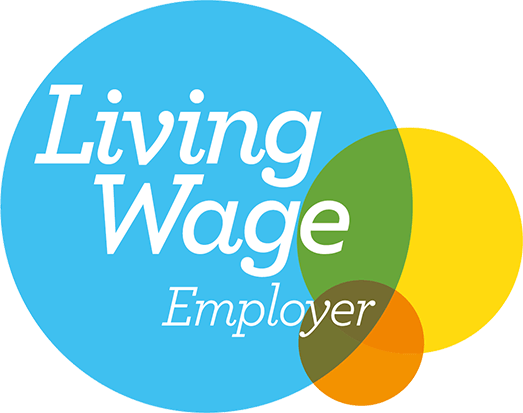News
Levelling Up White Paper – Regen or Bust
4 February 2022
The Levelling Up White Paper proposes measures that the Government hopes will breathe fresh life into disadvantaged communities across the UK and is tipped to be the start of a decade-long national infrastructure and regeneration project.

The long-anticipated Levelling Up White Paper has, finally, been released. It comes after a turbulent month for Government in the wake of ‘Partygate’, as well as harsh criticism of proposals announced in relation to Levelling Up'. Lisa Nandy, Shadow Levelling Up Secretary, has branded the plans as “regeneration on the cheap”, whilst inside sources at DLUHC even claim that Michael Gove himself privately expressed doubts over the plans for Boris Johnson’s flagship initiative.
But it is not all doom and gloom. Though many think that the Government could, and should, be putting more money into regenerating and modernising disadvantaged communities, the £1.5 billion Brownfield Fund, announced by Rishi Sunak at the last Budget in October, will not go amiss and will translate to the regeneration of approximately 1,500 hectares of brownfield land.
The Levelling Up White Paper proposes measures that the Government hopes will breathe fresh life into disadvantaged communities across the UK and is tipped to be the start of a decade-long national infrastructure and regeneration project.
The Missions
The paper, over 400 pages long, centres around 12 key “missions”, which range from improving local connectivity to meet the standard of London’s transport network, to providing nationwide 4G coverage, with 5G coverage for the majority of the population.
Throughout the missions, 2030 is evident as the key milestone in the Levelling Up programme.
These missions will now be a means by which parliament can hold Government to account on key Levelling Up objectives, but we are so far yet to see a clear timeframe for any key milestones within the next eight years. Fundamentally, the missions provide a useful metric for success (or failure) of the Levelling Up programme. We take a look at three missions relevant to our sector below.
Pride of Place
One of the key aims of the Levelling Up agenda is to build a sense of pride in place. The Government’s ambition is for satisfaction with one’s town centre, and engagement in local culture, to increase in “every area of the UK”. It will certainly be interesting to see how the level of satisfaction is tracked throughout the next 8 years, and how Government will support in this mission.
However, with the fate of the high street in the balance, Government has to be complementing its ambitious housebuilding targets with vibrant town centres, new leisure facilities and modern transport hubs, to improve footfall and popularity for the town centre model.
Regeneration
This incorporates an allocation for a largescale regeneration programme of 20 town and city centres that will be prioritised as part of the Brownfield Fund. The regeneration programme will be supported via an extension of Homes England’s remit. Where previously Homes England had been responsible for supporting Government housing delivery, the agency will increase its focus on local partnerships. Moving forward, the Government will ask them to increase their support for Mayors and local government to drive their ambitions for new affordable homes and regeneration.
Central to this project for Michael Gove is Wolverhampton. Not only has the city already received an injection of £20 million from the Levelling Up Fund, but the Department for Levelling Up, Housing and Communities is moving their headquarters from its current location on Marsham Street (sharing a building with the Home Office) to the centre of Wolves.
In a national setting, a recent poll concluded that the Conservatives were 20%-27% behind Labour in traditional ‘Red Wall’ seats. The ‘Levelling Up’ agenda was an undeniably popular concept in these areas, even if many still haven’t read the bulky White Paper (we don’t blame them!).
Housing
What is clear, though, about Levelling Up, is that housing will dominate the agenda. £120 million for Mayoral Combined Authorities will allow for the delivery of 7,800 homes in the North and Midlands, again, on brownfield land. In addition, £12 billion has been ringfenced for affordable housing and an additional £2.6 billion from the Shared Prosperity Fund, which aims to decrease disparity between communities (though this amount is far less than the UK received from the EU’s structural funds for the same function).
In addition, extensive reforms will be made to social housing, presumably through the £11.5 billion Affordable Housing Programme, with a Social Housing Regulation Bill being introduced as part of the Levelling Up agenda.
However, the question that frequently arises with increased investment in housebuilding is ‘Do local communities have the requisite infrastructure to cope with an increased population?’ The government, to their credit, have acknowledged this issue, and announced record investment in infrastructure worth over £96 billion.
Looking to the Future
In summary, the Government, which has been criticised until now for not defining what Levelling Up actually means, has released a comprehensive programme for change, and scope for improvement for both housing and communities more widely. Whilst many are still not entirely clear what Levelling Up entails in detail, and others believe that much of the money promised isn’t necessarily new, the White Paper has set the tone for the Government’s ambitions for placemaking over the next decade.
If you require advice on anything included in the Levelling Up White Paper or how the work of DLUHC will affect one of your projects, please get in touch with us.






